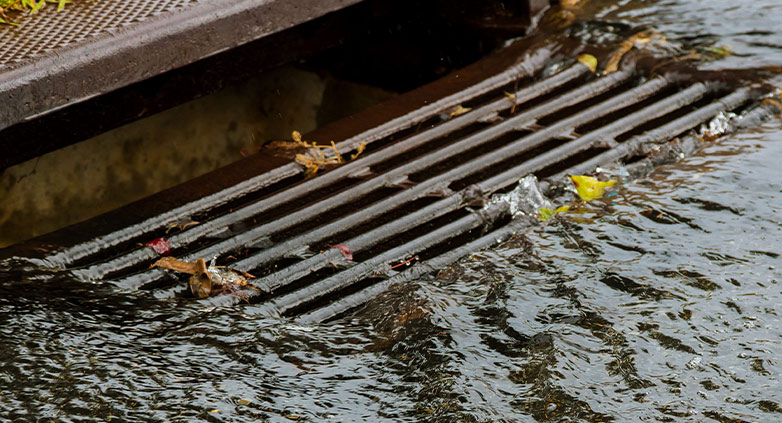How To Build A Concrete Catch Basin – 8 Steps To Follow
Catch basins are an integral component of urban water management systems, playing a vital role in preventing flooding and ensuring efficient water runoff control. These structures are particularly critical in areas prone to heavy rainfall or where water accumulation can cause significant issues. The process of constructing a concrete catch basin involves careful planning, precision, and a basic understanding of construction principles.
The process of building a durable concrete catch basin begins with careful site selection, ensuring it’s strategically placed for maximum efficacy. In the next step of constructing your basin, you’ll create a sturdy form using plywood, serving as the mold. The installation of a drainpipe is a critical step, ensuring proper water flow and drainage. Pouring concrete forms the core, followed by reinforcing it with rebar for added stability and durability. Lastly, a metal grate is placed atop the basin, serving not only for safety but also to prevent debris from clogging the system.
Embarking on a project to build a concrete catch basin can initially appear challenging. However, with the right tools, materials, and guidance, it becomes a highly achievable task that can significantly enhance your property’s water management system. Continue reading to uncover detailed steps, expert tips, and best practices that will transform this seemingly daunting project into a rewarding and successful endeavor.
Tools You’ll Need To Get Started

Before starting the construction process, it’s essential to assemble all necessary tools and materials for your concrete basin. Equipping yourself with the right tools not only simplifies the task at hand but also guarantees the durability and effectiveness of the structure. This preparation is key whether you’re experienced in DIY projects or embarking on your first construction endeavor. Having everything ready beforehand will contribute to a smoother, more efficient workflow.
- Metal Grate
- Sand
- Flat Trowel
- Small Shovel
- Concrete Mixing Container
- Concrete Mixing Hoe
- Garden Hose
- Concrete
- Rebar
- Drain Pipe
- Hammer or Drill
- Screws or Nails
- Circular Saw
- 2×4 Lumber and Plywood
- Shovel
8-Step Guide to Building a Concrete Catch Basin: A Detailed Process
Building a concrete catch basin is a meticulous process that requires careful planning and execution to ensure optimal functionality. This 8-step guide provides a detailed walkthrough of the process, from excavation to the finishing touches.
#1 Dig Your Hole
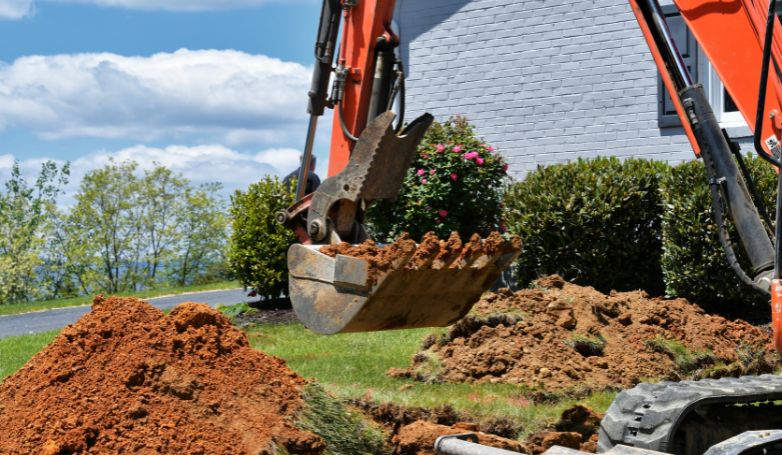
The first step in building a concrete basin is the careful excavation of a suitable hole. This hole should ideally be positioned next to your foundation or in an area of your lawn that is prone to water collection. For a standard two-foot design, the excavation needs to be at least 32 inches wide in both length and width, providing enough room not only for the basin but also for the surrounding concrete walls. The depth of this excavation is critical too, as it must be deep enough to accommodate the structure and its connection to the drainage system. Using tools like a square shovel or spade will aid in achieving the precise edges and uniform depth required for optimal functionality.
#2 Form Your Concrete
Creating a sturdy form is crucial for the structural integrity of your catch basin. To shape its interior, use high-quality plywood cut to the necessary dimensions. Attach 2×4 lumber to the interior corners of the plywood form using reliable fastening methods like nailing or screwing to ensure a secure fit. The space between the edge of the hole and the plywood, typically 4 to 6 inches, will dictate the thickness of the basin’s walls. This thickness is vital for providing the necessary support and durability. If the basin is located next to your home, consider integrating the house’s foundation into the form, which can eliminate the need for an additional side.
#3 Install the Drain
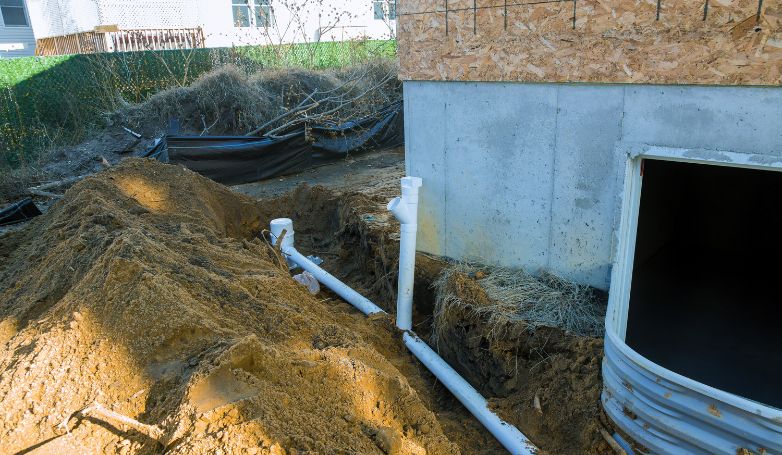
For your catch basin to function effectively, proper drainage installation is key. Install the drain pipe at the base of one of the side walls before pouring the concrete. This pipe should slope slightly towards a dry well or curb, facilitating efficient water flow. It’s important to consider the recommended floor thickness of 4 to 6 inches to ensure the drain is positioned correctly. This careful planning will help prevent future drainage issues and maintain the basin’s functionality.
PRO TIP: When trying to determine the height of your drain, make sure to consider how thick your concrete floor will be. Ideally, you’ll want it to be around four to six inches thick, the same as your walls.
#4 Use Rebar to Reinforce
Reinforcing the concrete with rebar significantly enhances the structural strength of your catch basin. Position rebar at strategic locations within the designated pour area, ensuring to drive each piece at least four inches deep into the ground. Distribute the rebar evenly, placing a piece every eight inches, but without protruding above the surface.Consulting local building codes is crucial to ensure compliance with regulations regarding rebar length and placement, ensuring your catch basin meets safety and durability standards.
#5 Pour Your Concrete

The pouring of concrete is a critical phase where precision and adherence to instructions are key. Fill the space between the hole’s edge and the plywood form with concrete, mixed according to manufacturer’s guidelines. While there are various methods for mixing concrete, hand mixing is often the most practical and cost-effective for small-scale projects. For larger projects, consider renting a concrete mixing truck for efficiency and consistency in the concrete mix.
PRO TIP: While there are many ways to mix concrete, we recommend doing it by hand. It’s the most cost-efficient way unless you want to spend money on hiring a big mixing truck from a concrete company.
#6 Remove Your Form
After the concrete has set and cured, which typically takes several days, carefully dismantle the plywood form and any other temporary building materials. This step requires delicacy to avoid damaging the newly formed concrete walls of the catch basin. The removal process should be done methodically, ensuring the integrity of the basin’s structure is maintained.
#7 Pour The Bottom
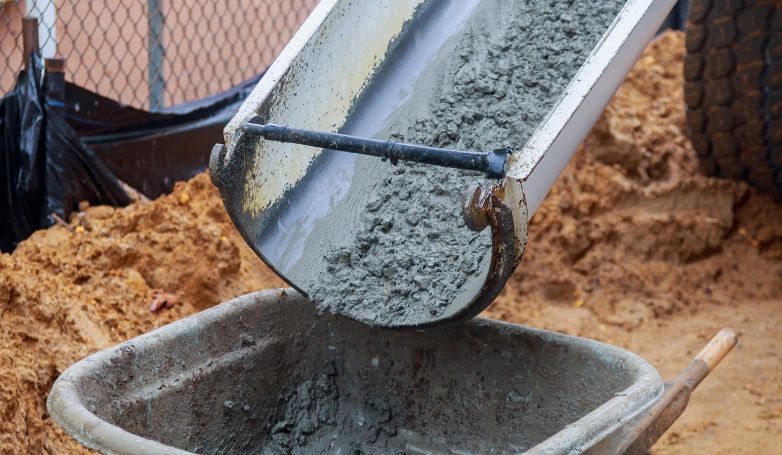
Before pouring the concrete base, a layer of sand, about three inches thick, should be spread evenly across the base of the hole. This sand layer acts as a cushion, reducing the risk of the concrete settling and cracking over time. After laying the sand, pour the concrete for the base and use a trowel to smooth it out, ensuring a level and even surface. This step is crucial for creating a solid foundation for your catch basin.
#8 Attach Your Grate
Finishing your catch basin with a secure metal grate is vital for safety and functionality. You can either custom-build a grate to fit your basin or opt for a pre-made one. The grate should be robust enough to support the weight of an adult or animal, preventing accidental falls into the basin. Ensure the grate is firmly attached and sits flush with the basin’s edges for optimal safety and effectiveness.
Where Should I Build My Catch Basin?

A catch basin should sit at the lowest point on your property. You want it to be a place where water pools or puddles after a rainstorm. Of course, before that, you’ll want to analyze the foundation of the home.
Remember, your home’s foundation will likely be one of the four walls of your catch basin. If the foundation of your home is not in good condition, you could end up diverting water into it, which would be an absolute nightmare.
As a rule of thumb, you want to find a spot along your home’s perimeter that not only looks aesthetically pleasing but is out of the way of most foot traffic.
How Large Should My Catch Basin Be?
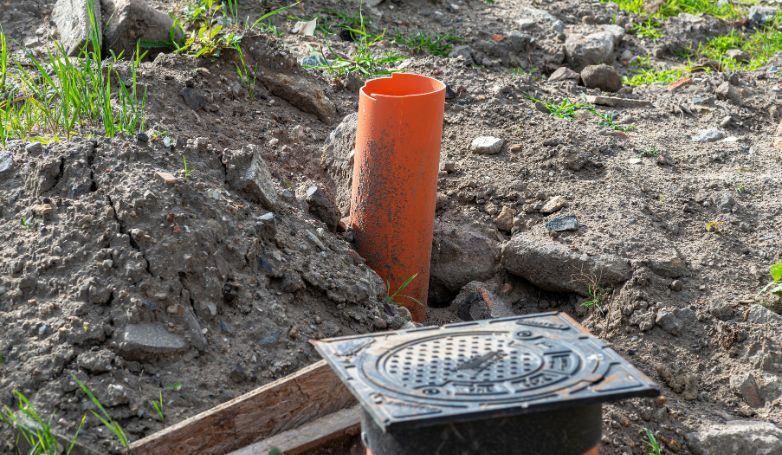
For most residential properties, a 2×2-foot catch basin should do the trick. The drain should be anywhere from four to six inches. The only reason you’d go larger is if you were building a commercial catch basin.
If you don’t have serious water management requirements, you may even consider going smaller with a 1×1-foot catch basin. It’s up to you to consider how much rainfall you get along with your roof’s surface area when building a catch basin.
What Are The Different Types of Residential Catch Basins?
If you’ve done any research prior to stumbling upon this article, you may have seen that there are numerous options for catch basins out there. Let’s take a look at some of the most popular choices for residential catch basins.
- Plastic Catch Basin: If you’re building a smaller catch basin, plastic is a great option! These types of catch basins are typically made out of PVC or high-density polyethylene.
- Polymer Concrete: This type of concrete is far more durable than regular concrete, as it uses a unique polymer binder with natural mineral aggregates.
- Pre-Cast Concrete: A pre-cast concrete catch basin is very common and won’t often cost you very much. However, you will need a backhoe or a small crane to install one.
- Cast-In Concrete: A cast-in concrete basin will be a good choice if you can’t deal with a heavy pre-cast basin. With a cast-in concrete basin, you will have to dig a hole, plot your meal frame, and sturdy with rebar.
How Much Does It Cost To Build a Concrete Catch Basin?

Understanding the cost involved in building a concrete catch basin is crucial for budgeting and planning. The total expense varies based on several factors, including the size of the basin, the quality of materials used, and whether you opt for a professional installation or a do-it-yourself approach. Here’s a breakdown of the costs to consider:
Professional Concrete Catch Basin Installation
- Cost Range: For a professionally installed concrete catch basin, prices generally range from $2,500 to $5,000. This cost variance primarily depends on the size of the catch basin and the complexity of the installation process.
- Size Factor: The larger the catch basin, the higher the cost. This is due to increased materials and labor required for larger basins.
- Material Quality: High-quality concrete and reinforcement materials will add to the cost but are essential for durability and longevity.
DIY Alternatives: Plastic Catch Basins
- Cost-Effective Option: If you are working with a tight budget, a plastic catch basin might be a feasible alternative. These can be purchased from local hardware stores for under $100.
- Durability Considerations: While plastic catch basins are more affordable, they are significantly less durable than concrete. They are typically suitable for areas with minimal water management needs.
- Long-Term Investment: It’s important to consider the long-term implications of choosing plastic over concrete. While the initial investment is lower, the need for replacements or repairs could make plastic more costly over time.
In summary, when deciding on the type of catch basin to install, consider both the immediate financial outlay and the long-term implications on durability and maintenance. A concrete catch basin, though more expensive upfront, offers greater durability and effectiveness for comprehensive water management. On the other hand, a plastic catch basin can be a cost-effective solution for minimal water management needs, but it may lack the longevity and robustness of a concrete structure.
Benefits of a Well-Built Concrete Catch Basin
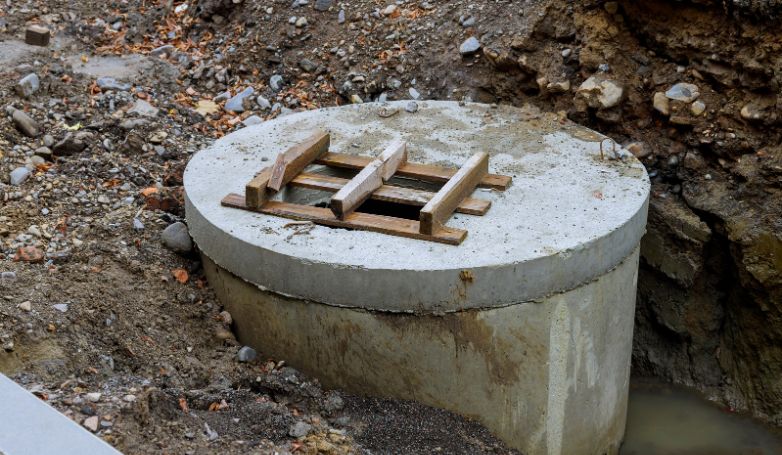
The implementation of a well-built concrete catch basin is a pivotal decision for any paving project. Whether it’s for residential driveways, commercial parking lots, or urban roadways, the inclusion of a catch basin significantly impacts the area’s overall water management and integrity. In this section, we delve into the key benefits of integrating a concrete catch basin into your paving project. These advantages not only highlight the importance of proper water drainage but also underscore the catch basin’s role in preserving the long-term health and safety of paved surfaces.
Efficient water drainage
A well-constructed concrete catch basin serves as a critical component in managing surface water. Its primary role is to efficiently collect and redirect rainwater and melting snow, preventing water accumulation on surfaces like driveways, parking lots, and roads. The design of these catch basins allows for the quick and effective channeling of water into the drainage system. This process is essential for maintaining dry and safe surfaces, particularly in areas prone to heavy rainfall or snow. By ensuring proper water flow, a concrete catch basin significantly reduces the risk of water damage and enhances the overall functionality of the paved area.
Prevention of flooding and erosion
One of the most significant advantages of installing a concrete catch basin is its role in preventing flooding and erosion. By effectively capturing excess water, these structures help to maintain the integrity of the surrounding landscape. This is particularly important in preventing soil erosion around driveways and parking lots, where the stability of the ground is crucial for safety and longevity. A properly functioning catch basin mitigates the risk of flooding, which can be costly and disruptive for property owners. By directing water away from vulnerable areas, these basins play a vital role in preserving the landscape and preventing potential damage to nearby structures.
Long-term durability and structural integrity
Concrete catch basins are renowned for their durability and structural integrity. When built using high-quality materials and proper construction techniques, they can withstand harsh environmental conditions and heavy traffic. This resilience translates into a long lifespan, making them a cost-effective solution for water management in paved areas. The robustness of concrete ensures that the catch basin remains functional and maintains its shape and structure over the years, requiring minimal maintenance. This long-term durability is a key benefit for property owners looking for reliable and low-maintenance solutions for water drainage and management.
Final Thoughts
In conclusion, constructing a concrete catch basin is a manageable task that yields significant benefits. With the right tools and techniques for framing and pouring concrete, you can effectively tackle this project. The rewards of this endeavor extend far beyond immediate water management solutions. A well-built catch basin enhances your property’s value, safeguards against future drainage issues, and ensures a robust, long-term solution for water control. By investing in a concrete catch basin, you are not just addressing current needs but also proactively securing the health and integrity of your property for years to come.

